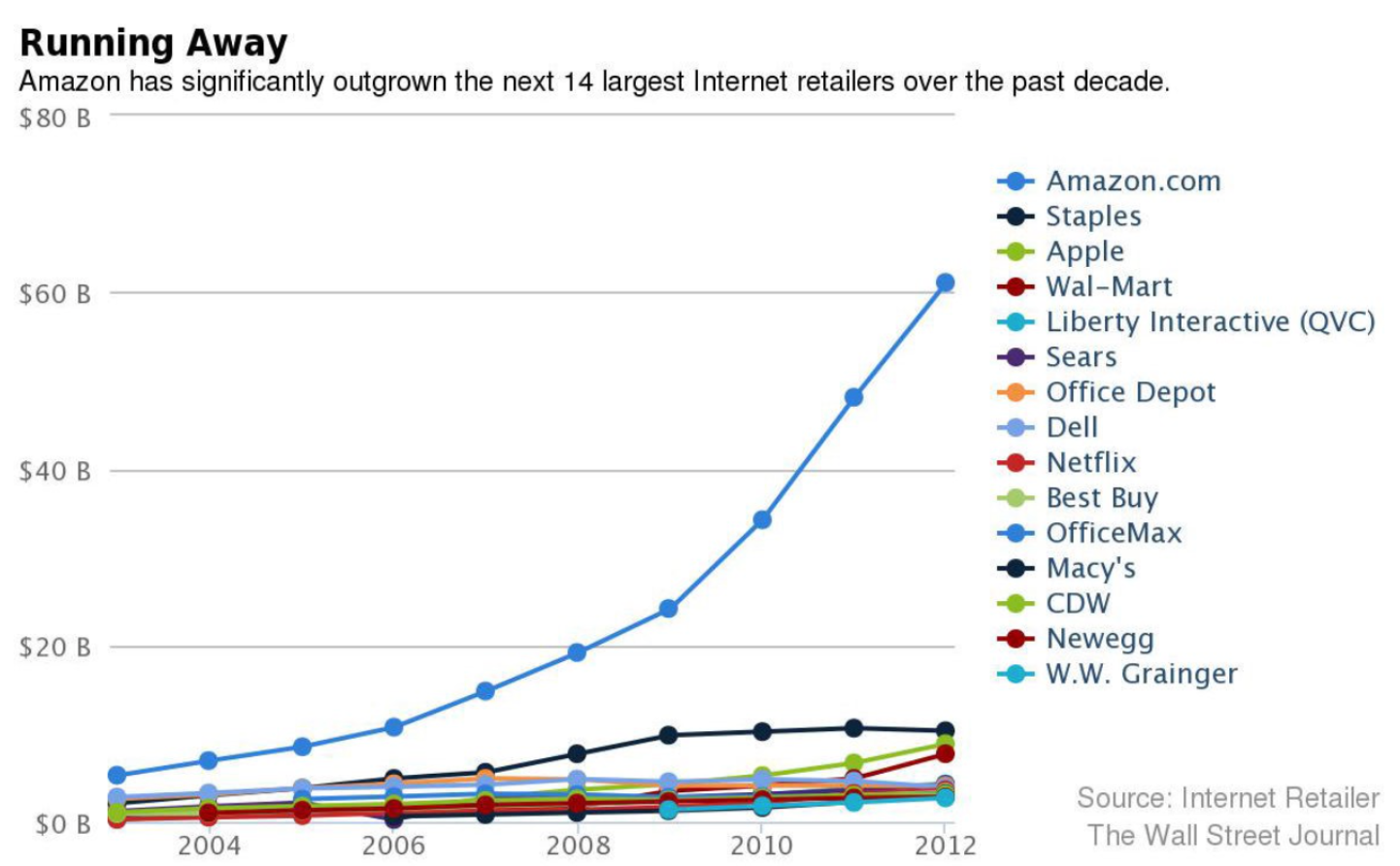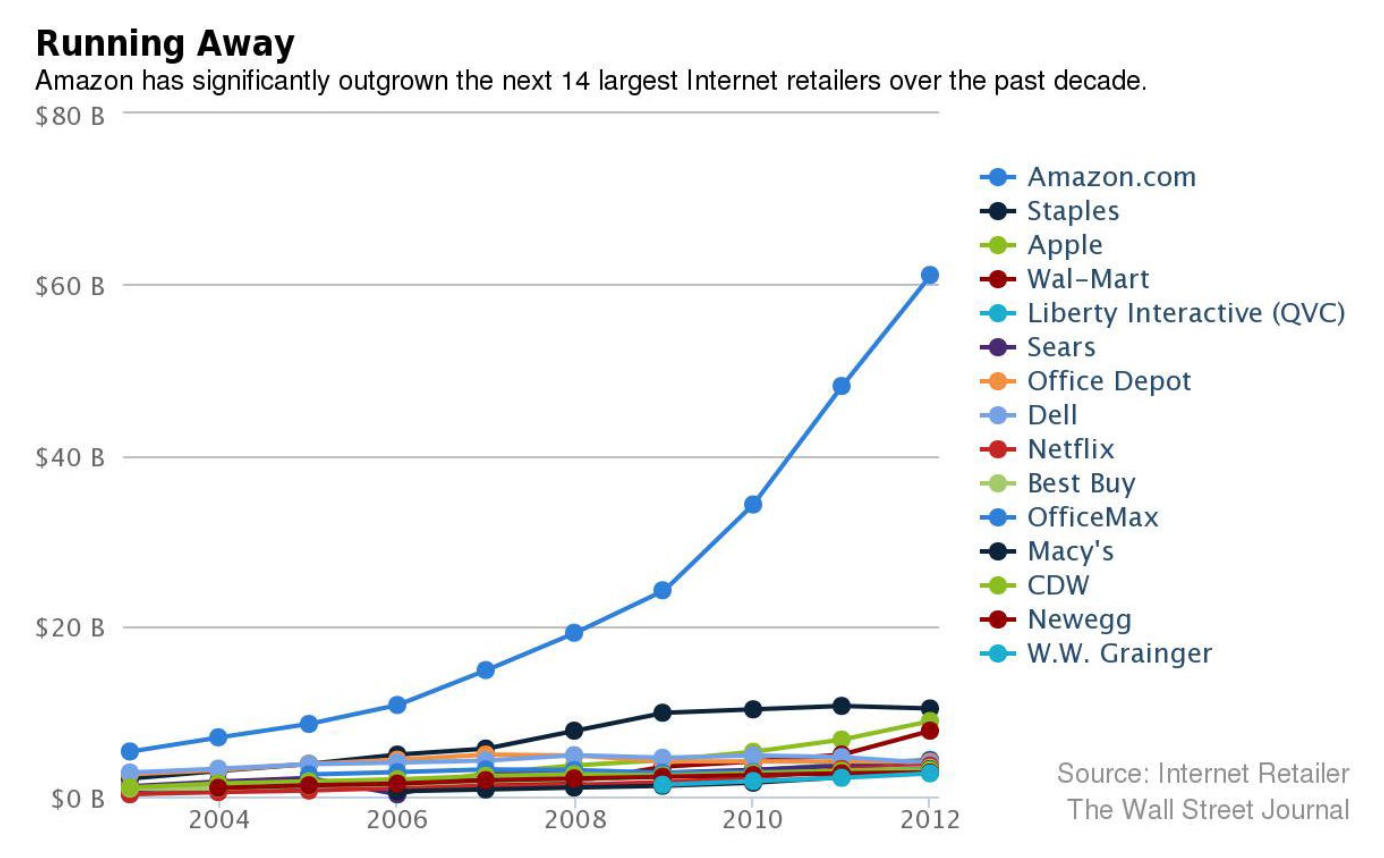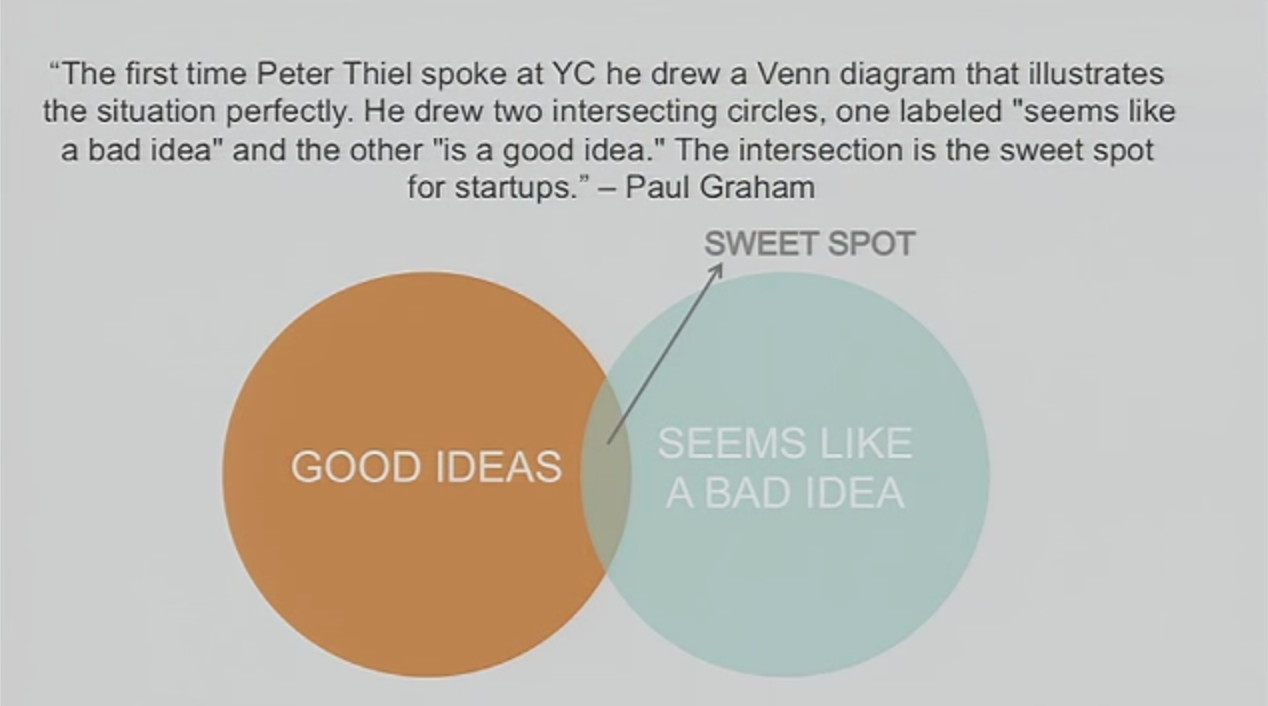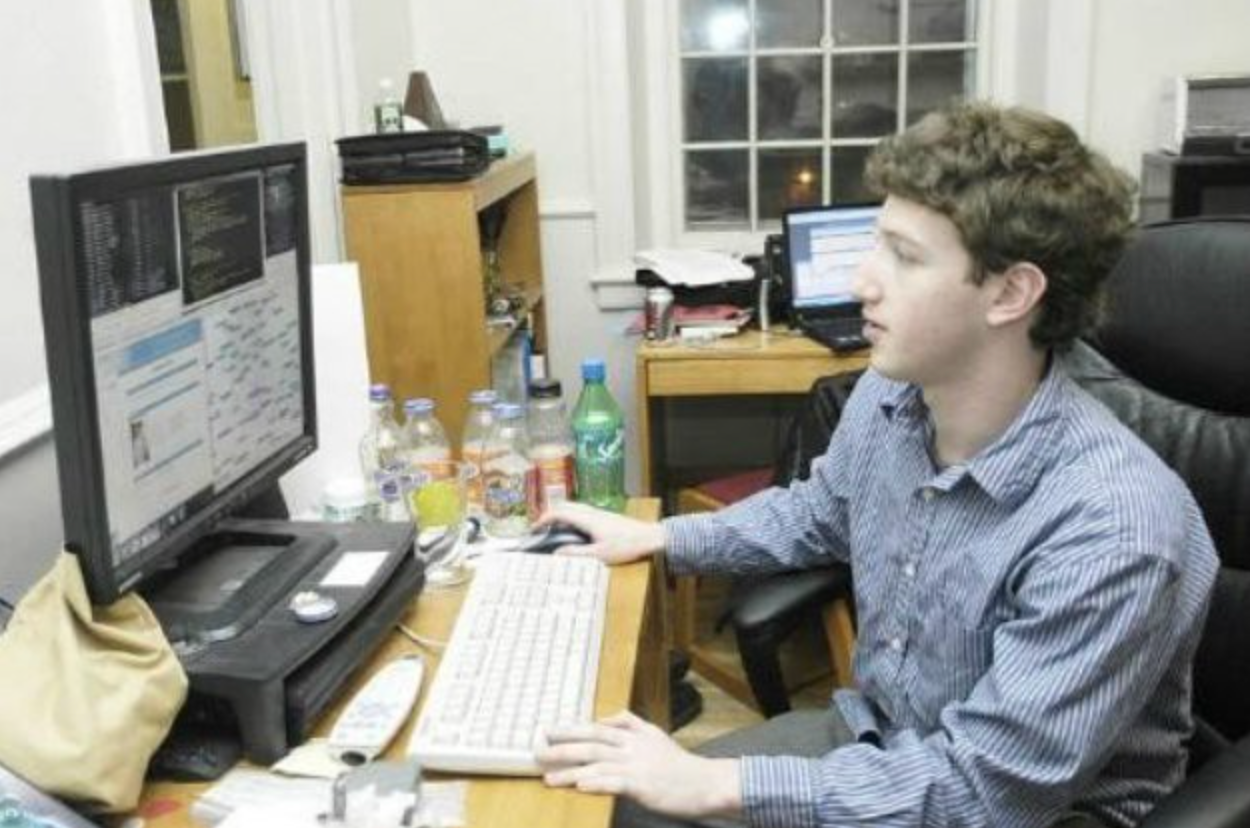The biggest risk

One of our favorite companies at The Family, Star of Service, does absolutely nothing the “right” way. You’re not going to see a Harvard Business Review article on them, because it’s still way too counterintuitive. But it works.
We’ve moved from a linear economy where things were predictable to an exponential future. That means all that time people spend designing a business plan or a business model isn’t very useful. You could only design a business model when things followed certain patterns.

The best businesses today don’t follow any patterns. They’re a couple of people in a room, doing everything “wrong”, and finding something that people love. That’s a massive paradigm shift: people used to plan and allocate assets for a future that they could predict. But now your only hope to predict the future is by actively building it yourself.
That means taking much bigger risks, because the rewards are also much bigger. If you are going to build a startup, it’s because you want to take big risks and rule the world.
It was never like that before. If you were a high achiever in the 1960s, you did great in school, you felt that there were opportunities, you wanted to make an impact, you would go work in a big company. If it was in medicine, energy, space, you would apply to the biggest company around because that was the best way to have a big impact.
Why? Because starting a business back then — and even up until not so long ago — was extremely expensive. Even back in 1995, when the internet was young, starting a business could cost you millions. Open source wasn’t a thing, all the tech was licensed, infrastructure was expensive. In that world, being employed by a big corporation was the best way to move up the ladder.
Then, overnight, the world changed.
The explosion of the internet changed everything. For the past 20 years, the cost of starting a new business has fallen every single month. What used to cost millions now costs a few thousand. If you launch a startup now with $10,000, you just might feel a little too comfortable.
As the cost of doing has gone down, the cost of learning has gone down, too. That’s great news because entrepreneurs have to keep learning — every day will bring you a new challenge. In 1995, if you wanted to learn a new programming language, it was painful. You had to try very hard to find the resources that you needed. The information might not have even been online yet, you might have needed to find the right library with the right books. Maybe that wasn’t so bad if you lived in London or Boston, but what about all those people who lived in places without big libraries?
Now though the distance between a question and its answer has disappeared. With a smartphone, you can find out almost anything in seconds. We used to think that you had to pay for knowledge: pay for an education at a prestigious school, pay for an hour with a consultant or a lawyer, pay for attending a conference. But paying for knowledge, paying for expertise, that’s over. Experts were good at explaining how the world was. But they weren’t any good at explaining how the world will be. That future-oriented view is the big game today. And the players are entrepreneurs.
That’s why the best entrepreneurs today don’t waste any time before learning — they go out and get freely available knowledge for themselves. And they do it fast.
Realize that the old value chain has been destroyed. The value chain during the industrial age was easy. It started with an idea, and that defined your ability as an entrepreneur. Ideas were rare in the industrial age, because knowledge wasn’t fluid. Having an idea set you apart from everyone else, all of those people who hadn’t thought of that idea. Then you needed capital, because usually your idea needed a lot of money before it could become a reality. Then you went to find the factory that would build your idea in exchange for the money you raised. Once the factory finished the product, you found distributors. If it all went well, customers were waiting at the distributors’ doors and they bought the product. You were a genius!
In the 21st century, that’s not how it works. The entrepreneur now is in direct contact with the end customer. Instead of
idea → money → factory → distributor → customer
It’s now
idea → customer.
You can quickly build a website to test and sell your idea before it even exists. If the market is there, you build it. But you don’t build anything without seeing that there is a real need for it (at least, you shouldn’t).
So today go-to-market is the first step that you have to succeed at, because EVERYONE has an idea now. A fluid knowledge market = a fluid idea market. You thought of it? Great, so did 18,000 other people. Ideas are a commodity. When an entrepreneur comes to me and says, “I’ve got a great idea,” my response is, “Only one? What’s the matter with you?” Ideas are like love, they’re all around us ;)
Instead of ideas competing for capital, you have capital that’s competing for the best market. If you can show traction in your product, there’s lots of money that follows. And that means money is becoming a commodity as well. Oh, by the way, over the past 30 years China has turned factory production into a commodity. And when you can talk directly to customers, distribution becomes a commodity. Every step in that old value chain has become a commodity!
What does it all mean? In our world, the cheapest, fastest, most direct way to have an impact is to launch a startup.
If that interests you, you need to understand what startups are. Their first characteristic is that they’re counterintuitive. That’s why the worst thing you can do is try to evaluate a startup idea. Instead, you have to experiment. Since reaching customers is direct, easy and cheap, you have an enormous edge if you test crazy things with those customers.
(I’ve always been surprised at how little energy some people put into finding the idea they think they’ll be working on for the next ten years. I’ll ask, “Why are you doing this?” “Well, one day I had an idea, it was pretty good, so I decided to do it.” Think about if people did that with relationships. Imagine going on Tinder, but you only get one swipe. And then it’s done, boom, babies, vacations, everything, you dedicate your life to them. 😳 😳 )
You need to test lots of ideas to find the right one. It’s not “one idea → one company” anymore. It’s “tons of ideas + testing them with real people → one startup”. The stranger an idea is, one that you’d never have believed just by thinking about it, the better chance it has of becoming a really huge disruptive force.
Take Facebook, Google, Airbnb. There’s no way that a site that lets you find out what your college friends are doing on Friday night is going to have 2 billion users. In chat rooms in the 90s, the person who said, “There’s these guys who are gonna crawl all the websites to keep the results in one place”, just got laughed at. And no one is ever going to let strangers come and stay in their home.
Peter Thiel described it really well. There are things that look like good ideas, and things that look like bad ideas. Good ideas are built by big companies, because it makes sense — and even if it doesn’t work, they don’t look dumb, because everyone thought it was a good idea.

Startups build bad ideas that might turn out to be INCREDIBLE. Any good idea that looks bad is the real sweet spot for startups. Look for things that are counterintuitive, look for problems. You’re more likely to find a crazy solution when you start from a real problem than to just imagine a solution and then go looking for the problem it fixes.
But don’t get it confused: all of those things make it easier to start a business, but running a startup is still extremely difficult. And it’s definitely not the best way to get rich — if you want to get rich, go work for an entrepreneur. The first 1000 employees at Facebook made more money than 80% of the entrepreneurs in Silicon Valley. And let’s just say that to be Employee #1000 at Facebook didn’t mean taking that big of a risk or being incredibly smart.
Instead, be an entrepreneur because you’re really looking to have an impact. And if that’s your ambition, you should take on the biggest level of risk possible. In today’s business world, you don’t have to mortgage your house or put your family into a bad situation in order to take a big risk. You don’t need to take out a personal loan or anything like that. So whatever you do, do it big.
Don’t wait, either. The only thing that gives you the experience needed to be an entrepreneur is being an entrepreneur. Start as soon as you can. Youth is a huge asset in our world. Things are moving so fast that the older you are, the more confused you feel. Don’t worry about not knowing anything — ignorance really is bliss. Entrepreneurs have to be so completely focused on what they’re doing, that it can be good if you don’t know how bad things can get.
Plus, when you know nothing, you can learn anything. Having an incredible learning curve is the most important thing. People look at successful entrepreneurs, or anyone who’s successful really, and think that they were born that way, that a teenage Mark Zuckerberg was the same Mark Zuckerberg who’s now running a company worth over $400B. But he wasn’t — he just accelerated his learning curve along the way. Everybody has their own invisible learning curve — an entrepreneur has to do everything they can to make their curve go as steep as possible, as fast as possible.

Again, remember one thing. In an exponential world, the best way to predict the future is to build it yourself. In the end, doing that is way less risky than letting others build it for you.
No spam, no sharing to third party. Only you and me.